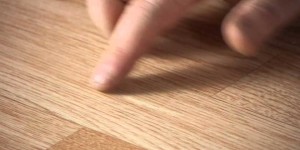If scratches and damage occur to the surface of a hardwood installation, it may be possible to repair them and restore the like new look of the floor by refinishing it. This involves using an industrial sander to remove the top layer of the material. This is then treated with appropriate stains and urethane coats to achieve the desired effect. Most standard installations will be able to handle multiple refinishing treatments over the life of the product.
Hardwood is a natural product that will react to the temperature and level of humidity around it. Extremes of either of those variables can lead to the material plumping, cracking, warping, or distorting. To avoid these issues, maintain a relative humidity of 35% – 55% and temperatures ranging between 18 and 24 degrees centigrade in any space where it is installed. In locations such as basements, bathrooms, and some kitchens, it may be necessary to employ an HVAC system and or use a dehumidifier to control the levels in the space.
Dust, sand, and other small particles represent the greatest threat to the surface beauty of a wood floor. These tiny grains act like the grits of a piece of sandpaper, and as people walk across the floor they will inadvertently press them down into the surface of the wood floor and or drag them across the finish, scarring and scratching it.
In order to prevent scratching you should either sweep or vacuum the wood floor regularly. Do not allow the tiny abrasive materials to build up on its surface or they will mar the surface of the floor over time. Rugs and mats can also be placed at any entrances to the room in order to cut down on the amount of small particle debris that comes into the space.These rugs should be dusted out regularly.
There are a number of cleaning products which are specifically designed for cleaning wood floors. You will also find that most floor cleansers are appropriate for Hardwood, provided that they are non-alkaline, and are not a wax.
Hardwood is more resistant to damage from moisture than other flooring materials like Marble & Ceramics, however it is still a danger that needs to be addressed. Never wet mop a Wood floor or immerse it in water for any reason. A damp mop can be used to remove surface stains and pick up small debris, but do not allow the wood floor to remain moist for more than a few minutes. If you are using a wood floor cleaning product that requires mixing with water you should carefully follow all manufacturer instructions. If liquid is spilled on the floor it needs to be wiped up immediately. liquids can penetrate in the surface joints, causing deep stains that will be impossible to remove. Excessive moisture will also cause warping in the wood.
Excessive humidity or lack thereof can cause damage to a Hardwood floor. In moist environments the material tends to plump up, while in dry environments it is prone to shrinking. The use of a humidifier or a dehumidifier can help to cut down on this problem.

